Hanoi Opera House: A Cultural Gem in Vietnam
The Hanoi Opera House stands as a testament to Vietnam’s rich cultural heritage and architectural prowess. Nestled in the center of the busy Vietnamese city, this famous site has enthralled guests for decades with its grandeur and grace. Let MOTOGO Tours explore.

A Brief History of Hanoi Opera House
A great monument reflecting the cultural and historical trip of Vietnam is the Hanoi Opera House. Designed by French architect Herman Duez, this architectural jewel was created between 1901 and 1911. Reminiscent of the great opera houses of Paris, it combines French colonial architecture with native Vietnamese forms. For Vietnam, the founding of the Opera House represented a major cultural turning point since it signified a change toward modernism during the French colonial era.
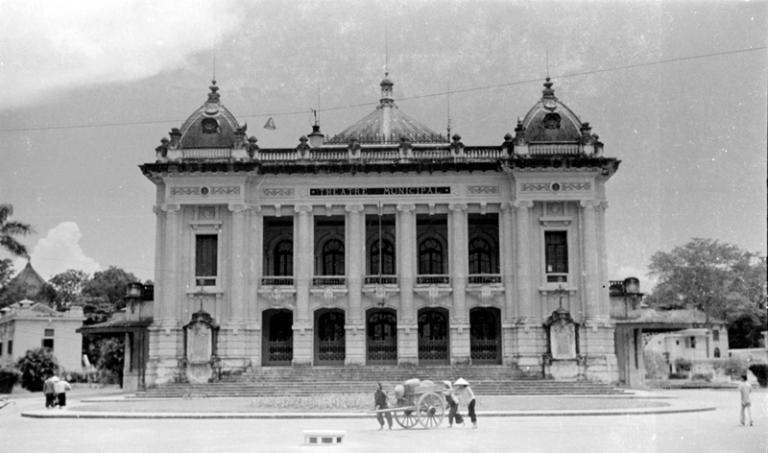
The Opera House has seen various modifications over time to bring it back to its former splendor and meet contemporary criteria. The most noteworthy changes occurred in the late 20th century when the facility was rebuilt to enable a wider spectrum of events including cultural ones. These days, it serves not only as a historical monument but also as a dynamic center for performing arts in Hanoi.
>>> Let’s see more: History of Hanoi: A Journey Through Vietnam’s Capital
Cultural Significance of Hanoi Opera House
Role in Vietnamese Arts
By means of the arts, the Hanoi Opera House has been instrumental in conserving and advancing Vietnamese culture. It provides a stage for ballet, traditional Vietnamese opera, and contemporary theater among other things. The site provides a variety of events highlighting local talent, therefore creating a rich cultural environment for guests as well as for the residents. It’s a location where culture comes alive and invites everyone to interact with the art, not only a venue to view performances.
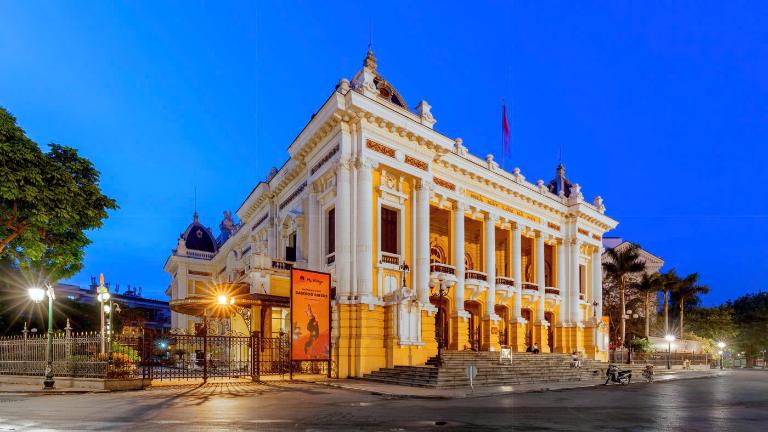
Events and Performances
The Opera House organizes many events across the year attracting viewers from all around. From amazing dance performances to enthralling classical music events, there is constantly activity here. Through events like Tuong (traditional Vietnamese opera) and Ballet, which highlight the adaptability and richness of the local cultural sector, one may get the core of Vietnamese culture.
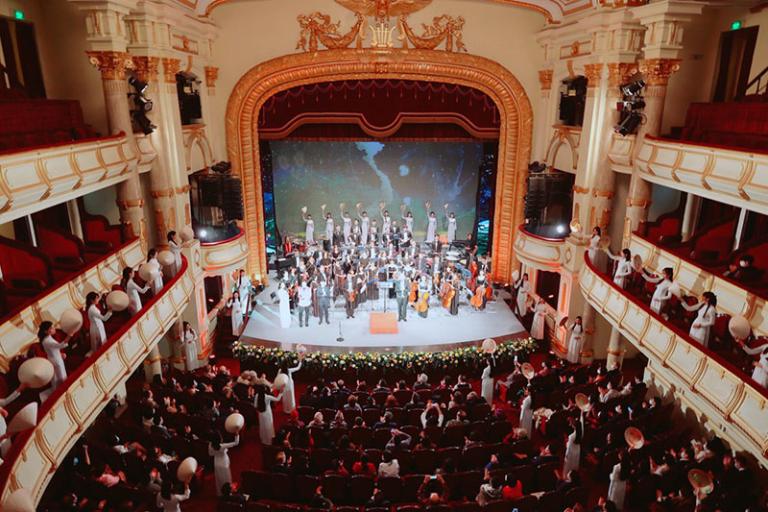
>>> You may also like: St. Joseph’s Cathedral: Hanoi’s Gothic Masterpiece and Cultural Icon
Architectural Marvel of Hanoi Opera House
Design Influences
A magnificent example of architectural creativity, the Hanoi Opera House deftly combines several forms reflecting both colonial inspirations and indigenous tastes. Designed by French architect Herman Duez, the Opera House mostly borrows from the Beaux-Arts architectural style, which was most active in Europe in the late 19th and early 20th centuries. Emphasizing symmetry and classical features, this style stresses visual harmony that is absolutely fascinating by its grandiosity and minute nuances.
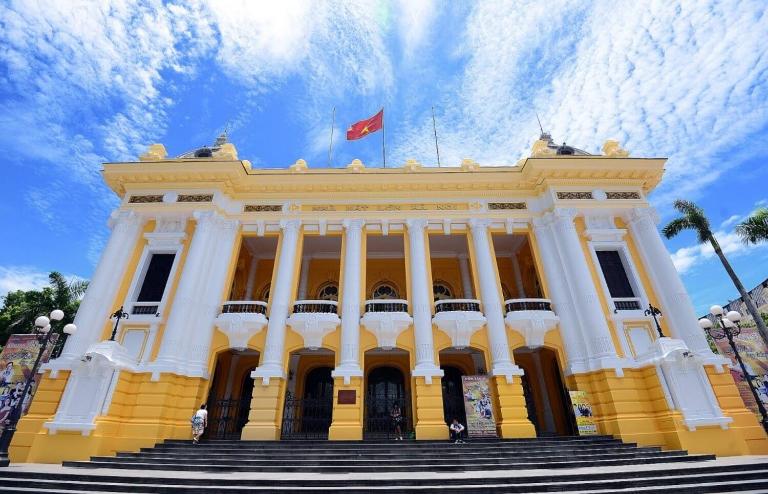
Approaching the structure, you find a façade reminiscent of the grandeur of European opera buildings with magnificent columns and elaborate ornamentation. High ceilings and big windows guarantee that natural light floods the inside, thereby improving the general ambiance and rendering the space feel both friendly and roomy. The design of the Opera House is a masterful mix of Vietnamese ideas with French colonial architecture.
Notable Features
Once within, the architectural brilliance of the Hanoi Opera House really comes to life. Comprising around 600 seats, the main auditorium is a wonder of acoustics and design. Its curving ceiling and well crafted sound system offer a close environment where every note may vibrate naturally. Stunning paintings and gold leaf embellishments adorn the walls of the auditorium, accentuating the opulence that permeates the room.
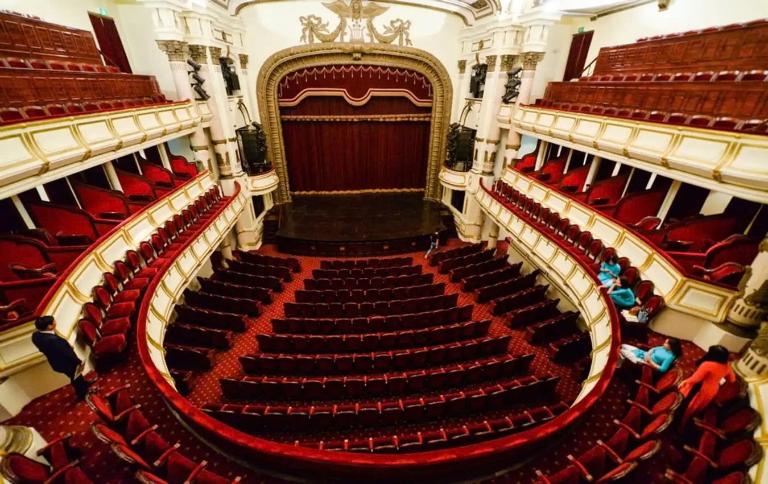
One cannot overlook the strikingly elegant grand staircase leading to the main door. Two big, ornamental columns flank the staircase, which serves as a dramatic focal point improving the theatrical character of the entrance. It is not only a practical element. From the elaborate balustrades to the extravagant chandeliers hanging overhead, each adding to the opulence of the Opera House, the elements get more noticeable as you climb.
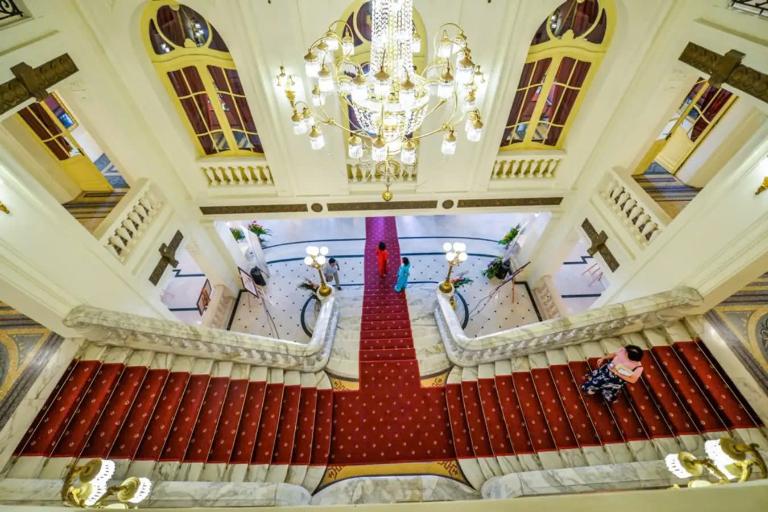
The auditorium’s seating configuration is meant to give outstanding acoustics from every direction. Plush velvet seats provide a degree of coziness that invites customers to curl in for an immersive experience. The interior lighting is also carefully chosen; dimmable elements create the ideal atmosphere for performances, therefore enabling the stage to take front stage free from interruption.
>>> Let’s see more: Exploring West Lake Hanoi: A must – visit place in Vietnam’s capital
Visiting the Hanoi Opera House
Location and Accessibility
Situated in downtown Hanoi’s Hoan Kiem District near the Square of August Revolution, Trang Tien Street, lies Hanoi Opera House. Perfectly situated in the center of Hanoi, the Opera House is easily reachable by several kinds of mobility. Getting to this famous site is simple whether your mode of transportation is cab, motorbike, or even walking.
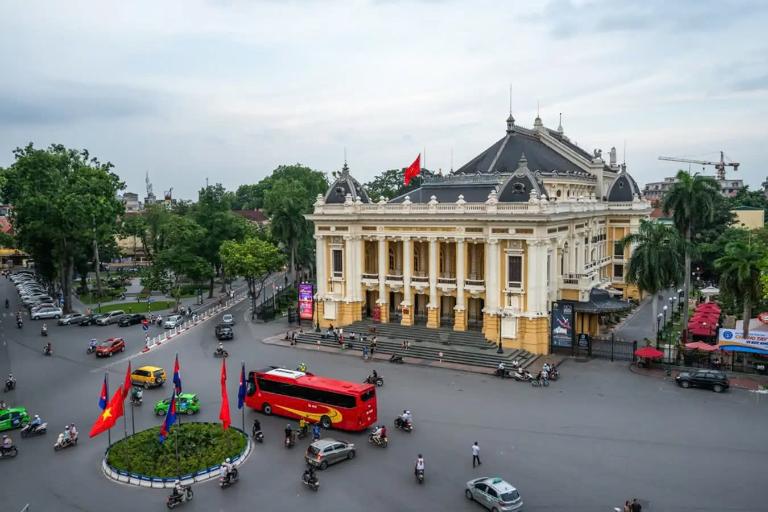
Ticket Information
There are two tour packages at the Opera House in Hanoi:
Hanoi Opera House Tour
- Max: 20 people/visit
- Time: 70 minutes/visit
- Ticket: VND120,000/pax (about US$4.8)
- Opening days: Monday, Tuesday, Wednesday, Thursday, Saturday & Sunday
Hanoi Opera House Tour & Art Show
- Max: 250 people/visit
- Time: 90 minutes/visit
- Ticket: VND400,000/pax
- Opening days: Monday & Thursday
Besides, you can book tickets for art shows at the Opera House, at around VND300,000/pax.
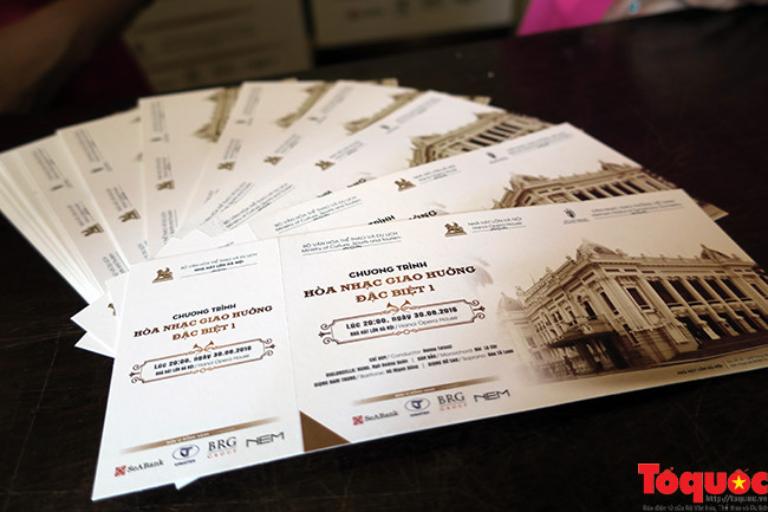
Tourist attractions near Hanoi Opera House
Exploring the Surroundings
Visit the Opera House and then spend some time investigating the energetic surrounds. The region is bursting with attractions including the old French Quarter, Hoan Kiem Lake, and Ngoc Son Temple. Every place gives your Hanoi travel a different taste, hence it is worth walking around the streets to find the hidden treasures of the city.
In addition, to enhance your experience, you can choose guided tours like Hanoi Motorbike Tours. They will provide a comprehensive overview of Hanoi Opera House’s history and significance
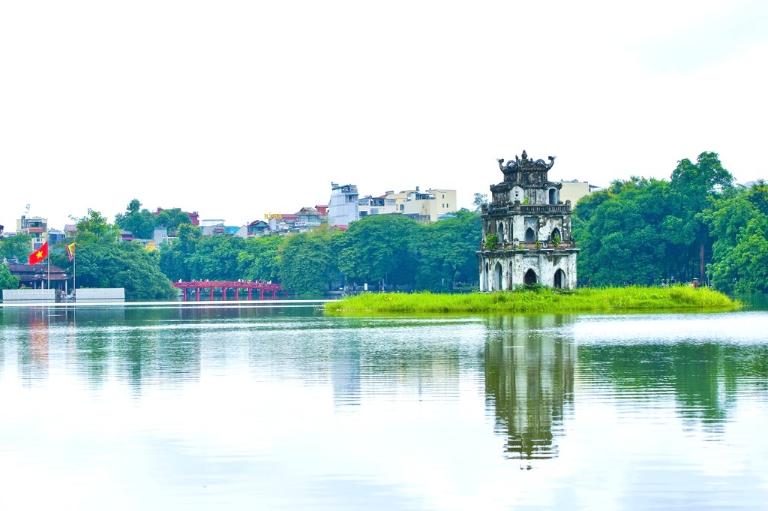
>>> Let’s see more: Turtle Tower: The Iconic Symbol of Hanoi’s Heritage
Dining and Shopping Options
The food of Hanoi is well-known, thus there are lots of restaurants close to the Opera House. From sophisticated restaurants to neighborhood street food vendors, there is something to please every taste sensation. After a great dinner, think about shopping a little. Perfect for bringing a bit of Vietnam home with you, the surrounding boutiques and handcrafted stores provide distinctive mementos and crafts.
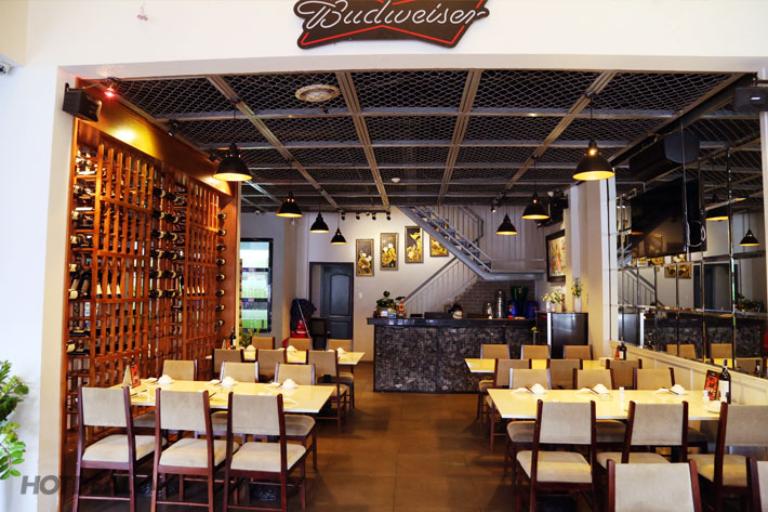
Tips for Your Visit Hanoi Opera House
Best Times to Visit
If you intend to visit the Hanoi Opera House, think about timing your trip around the several shows. The evenings often are especially vibrant, the city humming with activity. Still, daytime excursions are fun and let you explore the architecture and ambiance free from the crowds.
Dress Code and Etiquette
Dress for a performance such that it complements the grace of the setting. Usually a safe option, smart casual wear should be avoided too casual attire. Respect of the location and other audience members improves the whole experience for all.
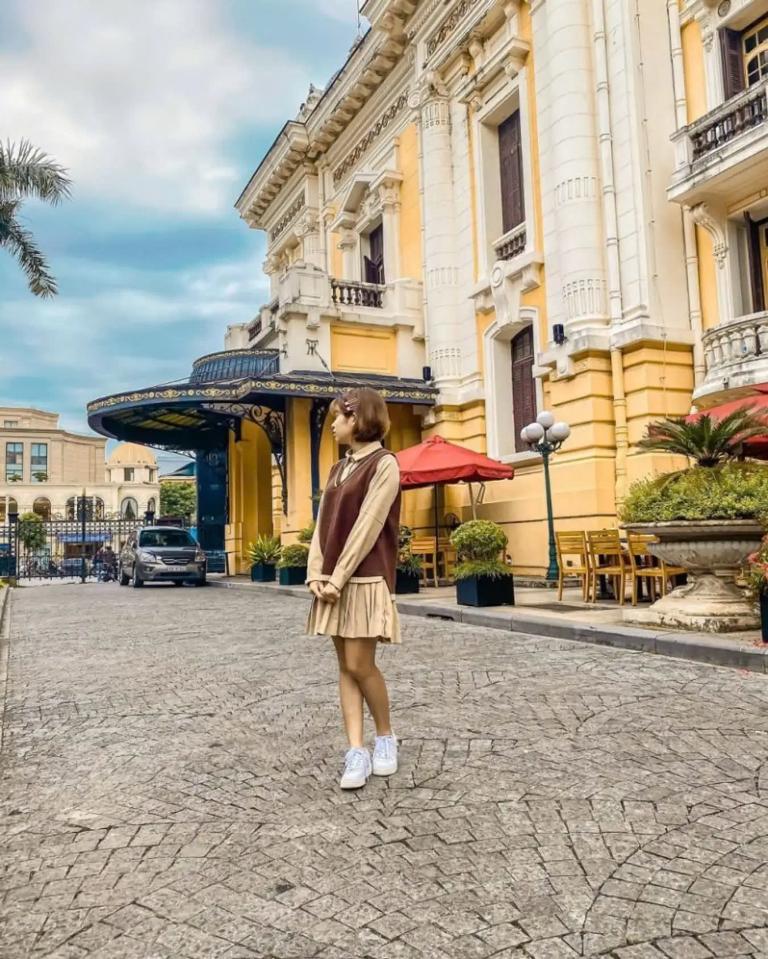
>>> Article for you: Hanoi Old Quarter: A Journey Through Time and Culture
Anyone visiting Hanoi has to make time to see the Hanoi Opera House. It is a major cultural site worth seeing since it provides a unique window into Vietnam’s creative legacy and colonial past. Attending a play or just appreciating its magnificent architecture, the Opera House perfectly embodies Hanoi’s active cultural scene.
Related Posts:
- Presidential Palace Hanoi: A Glimpse into Vietnam’s Colonial and Revolutionary History
- Long Bien Bridge in Hanoi: A Historical Icon and Tourist Destination
- Tay Ho Palace: A Famous Spiritual Destination in Hanoi
- Thang Long Water Puppet Theatre: Hanoi’s Cultural Masterpiece
- Perfume Pagoda in Hanoi: Ultimate Guide to Vietnam’s Spiritual Haven



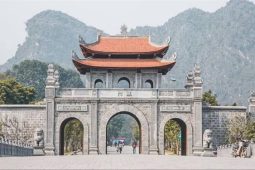





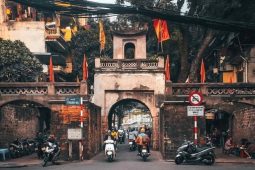

Be the first to comment!